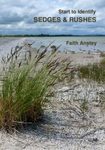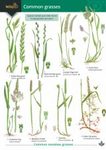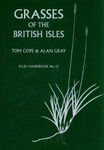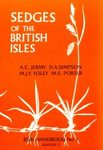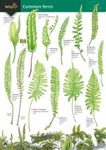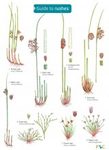Field / Identification Guide Identification Key
By: James Merryweather(Author)
280 pages, 700+ colour photos, colour illustrations, colour distribution maps, colour tables
A comprehensive photographic field guide to all the pteridophytes of Britain, with novel identification keys and comparison tables.
![Britain's Ferns Britain's Ferns]()
Click to have a closer look
About this book
Customer reviews
Biography
Related titles
About this book
This is a comprehensive, lavishly illustrated and user-friendly photographic identification guide to the fifty-seven ferns and seventeen other pteridophytes that occur in Britain. It is the perfect companion for botanists, naturalists, professional ecologists and anyone else with an interest in this fascinating group of non-flowering vascular plants. Designed to appeal to beginners and experts alike, this authoritative book includes novel identification keys and comparison tables that have been carefully devised to present only essential, easily understood technical terms and descriptions, avoiding jargon as far as possible. Cross-referenced throughout to facilitate the comparison of similar species, this definitive field guide is the go-to source for identifying these species with confidence.
Customer Reviews
Biography
James Merryweather has been studying ferns for more than fifty years, developing a particular interest in their identification and ecology. Having learned so much from generous pteridologists past and present, he now eagerly shares that knowledge and experience with others. He is an enthusiastic member of the British Pteridological Society, which promotes the study of this fascinating group of plants.
Field / Identification Guide Identification Key
By: James Merryweather(Author)
280 pages, 700+ colour photos, colour illustrations, colour distribution maps, colour tables
A comprehensive photographic field guide to all the pteridophytes of Britain, with novel identification keys and comparison tables.
"In the Victorian period and at the height of ‘pteridomania’ the world was awash with relatively inexpensive illustrated guides to the ferns and their allies. Fast forward a hundred years and the would-be-fern-identifier would struggle to find a dedicated up-to-date guide. The most comprehensive account of these plants, Chris Page’s The Ferns of Britain and Ireland, was last revised in 1997, is expensive, lacks established non-natives and is not for the field [...] It is this vacuum which Merryweather’s new guide aims to fill. [...] Almost every one of the 77 taxa treated is given a two-page spread, with observation tips, a very brief description of aspects of the plant and its habitat useful for its identification, and its distribution. These are nicely laid out and well illustrated [...] It goes a long way to filling the massive void and will, I think, be very popular with many naturalists and botanists. The conversational approach taken will engage with many readers getting to grips with these plants for the first time. It is, as it claims to be, user-friendly. The many photographs are good and well selected, the keys, hints and tips fine-honed, and the book looks handsome but robust enough to survive field use. It is strongly recommended."
– Fred Rumsey, British Wildlife 31(6), August 2020



























![Start to Identify Grasses [enlarged edition]](http://mediacdn.nhbs.com/jackets/jackets_resizer_medium/24/249274.jpg?height=150&width=112)
